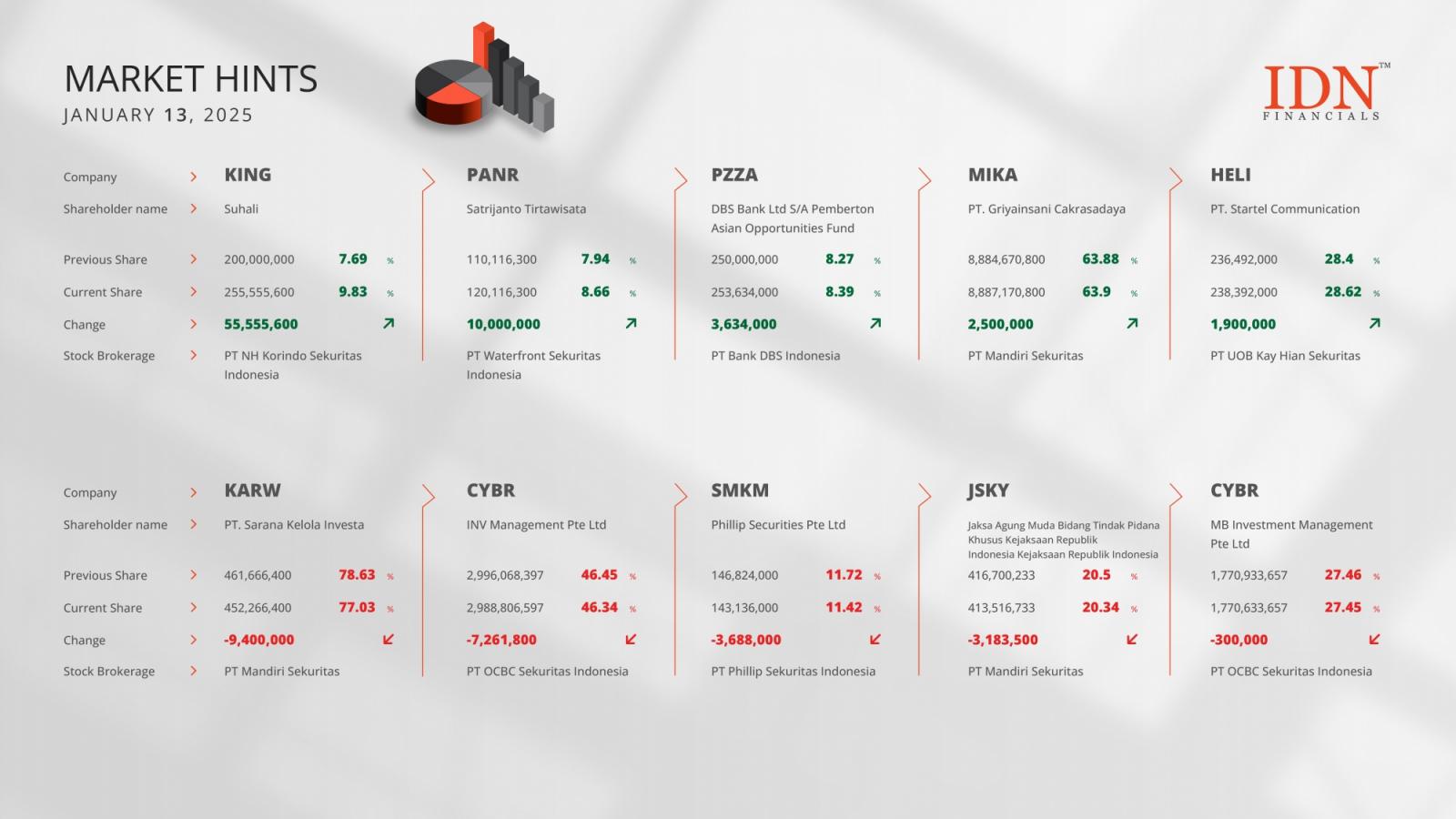In the Fourth Quarter 2023 Earnings Call, Office Properties Income Trust (NASDAQ:OPI) announced a reduction in their quarterly cash dividend as part of a strategy to increase liquidity. The company reported a decrease in normalized Funds From Operations (FFO) to $45.9 million, citing higher expenses as the main cause. Looking ahead, OPI expects a decline in both normalized FFO and same-property cash basis Net Operating Income (NOI) in the first quarter of 2024. With lease expirations of 1.9 million square feet not expected to renew, the company has completed significant financing activities to address its upcoming debt maturities and is actively engaging in discussions with tenants to renew leases, boasting a leasing pipeline of 2.8 million square feet. OPI emphasized its focus on operational and financial priorities for the coming year.
Key Takeaways
- OPI reduced their quarterly cash dividend to improve liquidity.
- Normalized FFO decreased to $45.9 million due to increased expenses.
- Anticipated decrease in normalized FFO and same-property cash basis NOI in Q1 2024.
- Lease expirations of 1.9 million square feet are not expected to renew.
- Significant financing activities were undertaken to manage upcoming debt maturities.
- The company is actively discussing renewals with tenants and has a sizable leasing pipeline.
- OPI is focused on maintaining operational and financial stability in 2024.
Company Outlook
- OPI predicts a challenging occupancy trend for 2024, with an expected 2% quarterly decline due to known vacates.
- The company has a leasing pipeline of 2.8 million square feet to mitigate the impact of non-renewals.
Bearish Highlights
- The company expects a decline in normalized FFO and same-property cash basis NOI in the upcoming quarter.
- Known lease expirations in 2024 amount to 1.9 million square feet, which may lead to a 2% quarterly decline in occupancy without new leasing.
Bullish Highlights
- OPI has completed significant financing activities to address debt maturities, including securing a $425 million credit agreement and issuing $300 million of new secured notes.
- The company is actively managing its balance sheet and considering the use of unencumbered assets and potential dispositions to address $650 million of debt due in February 2025.
Misses
- The decrease in normalized FFO this quarter marks a setback for the company.
- The non-renewal of 1.9 million square feet of expiring leases presents a leasing challenge.
Q&A Highlights
- Yael Duffy discussed the expected downward trend in occupancy for 2024, with the company bracing for a 2% quarterly decline without new leasing.
- OPI considered refinancing all debt due in 2024 and 2025 but ultimately chose to secure a revolving credit facility for added liquidity.
- Moelis (NYSE:MC) & Company has been engaged to help OPI explore various capital alternatives to manage upcoming debt maturities.
Office Properties Income Trust, with its ticker symbol OPI, has taken a conservative approach to manage its financials amid the challenges of lease expirations and debt maturities. The company\'s strategic financial activities and active engagement with tenants for lease renewals indicate a proactive stance towards maintaining financial health and operational stability.
Pro Insights
In light of Office Properties Income Trust\'s (OPI) recent earnings call and strategic financial decisions, insights from Pro provide a deeper understanding of the company\'s current market position. OPI is trading at a low Price / Book multiple of 0.15, which may signal that the company\'s assets are undervalued in the market, relative to its book value as of the last twelve months ending Q4 2023.
Despite the challenges outlined in the article, OPI has maintained dividend payments for 16 consecutive years, showcasing a commitment to returning value to shareholders even in the face of financial headwinds. This consistency could be a point of confidence for income-focused investors.
Pro Data further reveals a significant decline in the company\'s stock price, with a one-year total return of -75.78% as of the date provided, underlining the price volatility that OPI stock has experienced. This aligns with the \"Bearish Highlights\" section of the article, which mentions known lease expirations and a potential decline in occupancy.
For those considering a deeper dive into OPI\'s financials and future prospects, Pro offers additional tips and metrics, including a comprehensive analysis of the company\'s valuation multiples, profitability, and stock performance. There are currently 12 Pro Tips available, which can provide further guidance on whether OPI\'s current market valuation presents a potential investment opportunity.
Investors interested in accessing these insights can use the coupon code PRONEWS24 to get an additional 10% off a yearly or biyearly Pro and Pro+ subscription at Pro.
Full transcript - Government Properties Income Trust (OPI) Q4 2023:
Operator: Good day, and welcome to the Office Properties Income Trust\'s Fourth Quarter 2023 Earnings Conference Call. All participants will be in listen-only mode. [Operator Instructions] After today’s presentation there will be an opportunity to ask questions. [Operator Instructions] Please note, this event is being recorded. I would now like to turn the conference over to Kevin Barry, Senior Director of Investor Relations. Please go ahead.
Kevin Barry: Thank you, and good morning, everyone. Thanks for joining us today. With me on the call are OPI\'s President and Chief Operating Officer, Yael Duffy; and Chief Financial Officer and Treasurer, Brian Donley. In just a moment, they will provide details about our business and our performance for the fourth quarter of 2023, followed by a question-and-answer session with sell-side analysts. First, I would like to note that the recording and retransmission of today\'s conference call is prohibited without the prior written consent of the company. Also note that today\'s conference call contains forward-looking statements within the meaning of the Private Securities Litigation Reform Act of 1995 and other securities laws. These forward-looking statements are based on OPI\'s beliefs and expectations as of today, Friday, February 16, 2024, and actual results may differ materially from those that we project. The company undertakes no obligation to revise or publicly release the results of any revision to the forward-looking statements made in today\'s conference call. Additional information concerning factors that could cause those differences is contained in our filings with the Securities and Exchange Commission, or SEC, which can be accessed from our website, opireit.com or the SEC\'s website. Investors are cautioned not to place undue reliance upon any forward-looking statements. In addition, we will be discussing non-GAAP numbers during this call, including normalized funds from operations, or normalized FFO, cash available for distribution, or CAD, and cash basis net operating income or cash basis NOI. A reconciliation of these non-GAAP figures to net income are available in OPI\'s earnings release presentation that we issued last night, which can be found on our website. And finally, we will be providing guidance on this call, including normalized FFO and cash basis NOI. We are not providing reconciliation of these non-GAAP measures as part of our guidance because certain information required for such reconciliation is not available without unreasonable efforts or at all, such as gains and losses or impairment charges related to the disposition of real estate. I will now turn the call over to Yael.
Yael Duffy: Thank you, Kevin, and good morning. Before we begin, I would like to start by discussing the announcement last month regarding OPI\'s quarterly cash dividend. As market conditions in the office sector remain challenging, we felt it was prudent to reduce the dividend to increase our liquidity and financial flexibility. This will help us address future leasing costs, capital expenditures and our upcoming debt maturities. We recognize the value of the dividend to our investors and this decision was not made lightly. On today\'s call, I will review OPI\'s operating and leasing performance before providing an update on our goals heading into 2024. From there, I will turn the call over to Brian to review our financial results. OPI\'s portfolio consists of 152 properties totaling approximately 20 million square feet with a weighted average remaining lease term of 6.5 years. Our portfolio is well diversified by industry and geography with 64% of our revenues coming from investment grade-rated tenants. During the fourth quarter, we executed 196,000 square feet of new and renewal leasing with an average lease term of seven years and a roll-up in rent of 60 basis points. We ended the quarter with same-property occupancy of 89.5%. Renewals drove most of our leasing activity this quarter, including an eight year renewal with an insurance company for 100,000 square feet in San Antonio, Texas, and a six year renewal with an aerospace government contractor for 80,000 square feet in Chantilly, Virginia. Concessions and capital commitments declined 12% quarter-over-quarter and were 21% lower than our average for the year. We hope to see these trends continue as we head into 2024. In total, we signed 75 leases in 2023 for nearly 1.7 million square feet at a weighted average lease term of 8.5 years. New leasing accounted for 402,000 square feet or 24% of the activity. Looking ahead to 2024 and OPI\'s upcoming lease expirations. While we see evidence of large companies across corporate America urging workers to return to the office, including in-person mandates, the office sector faces subdued demand driven by headwinds associated with macroeconomic uncertainty and the impact of work from home. Most markets experienced declines in asking rents and occupancy levels in 2023, and we expect this trend to continue into 2024. Additionally, competition among landlords have put further pressure on net effective rents. In 2024, 3 million square feet or 15.5% of OPI\'s annualized rental income is set to expire. Our leasing and asset management teams are proactively engaging in renewal discussions with our tenants to understand their estate needs. Through these conversations, we have learned that approximately 1.9 million square feet, representing $53.8 million of annualized rental income will not renew. Accordingly, we have engaged leasing brokers and have launched marketing campaigns to address these vacancies. Our current leasing pipeline totaled 2.8 million square feet, of which 40% is attributable to new tenants. Turning to our recent development projects. Our 427,000 square-foot mixed-use development at 20 Mass Ave in Washington, D.C. is 55% leased to Sonesta International Hotels, and we are actively marketing the remaining vacancy. To date, we have toured over 20 tenants ranging in size from 15,000 to 150,000 square feet. However, as many of these tenants have requirements in 2025 and beyond, feedback has been slow. In the first quarter of 2024, we expect to deliver the three property campus redevelopment located in Seattle, Washington totaling approximately 300,000 square feet. The project includes the repositioning of two properties from office to life science and maintaining the third property for office use. The project is 28% pre-leased to Sonoma Biotherapeutics, and we are actively marketing the remaining vacancy with good activity. The project will be delivered with four move-in ready spec lab suites, which we believe serves as a differentiator as tenants evaluate options in the market. Turning to financing activities. To begin the year, we have made significant progress addressing our upcoming debt maturities. At the end of last month, we recast our revolving credit facility that was scheduled to mature on January 31 with a new three year $425 million credit agreement. Additionally, last week, we completed a five year $300 million secured bond offering at a 9% coupon and announced the redemption of our $350 million senior notes maturing in May 2024. OPI has $650 million of unsecured senior notes due in February of 2025, and we are assessing a range of options to address this maturity, including additional secured financings and asset sales. To assist us in evaluating our potential financing strategies, we have engaged Moelis & Company as a financial adviser. Turning to property dispositions. In 2023, we sold eight noncore properties, which generated $45 million in gross proceeds. Additionally, we have a 248,000 square foot property in Chicago, which Tyson Foods (NYSE:TSN) is vacating in January 2025 under agreement for sale. We anticipate this property will transact in the first quarter of 2024. Furthermore, we have identified and are in various stages of bringing additional properties to market. As we evaluate future sales, we will need to consider the impact that potential dispositions will have on our operating metrics and debt covenants. Before I turn it over to Brian, I would like to acknowledge that OPI, despite challenges facing the office sector, accomplished many of its objectives in 2023 and to start the new year. We executed nearly 1.7 million square feet of leasing, substantially completed two major development projects in Washington, D.C. and Seattle, sold noncore assets, and successfully executed new financings in both the CMBS and bond markets. Our progress was greatly supported by the efforts and reach of our manager, The RMR Group (NASDAQ:RMR), with its deep bench of experienced real estate professionals and banking relationships. Looking ahead, we hope to continue to build on this momentum and further execute on our operational and financial priorities in 2024. I will now turn the call over to Brian to review our financial results.
Brian Donley: Thanks, Yael, and good morning, everyone. We reported normalized FFO of $45.9 million or $0.95 per share for the quarter, which came in $0.01 below our guidance range due to higher operating expenses. This compares to normalized FFO of $49.4 million or $1.02 per share for the third quarter of 2023. The decrease on a sequential quarter basis was driven by higher interest expense and lower NOI as a result of Q4 tenant vacates and operating cost increases. Same-property cash basis NOI decreased 12.5% compared to the fourth quarter of 2022 and was in line with our guidance range, which was a decline of 11% to 13%. The decrease is mainly driven by elevated free rent concessions, vacancies and higher operating costs. We generated CAD of $0.18 per share during the fourth quarter and $1.51 per share on a rolling four quarter basis. As Yael mentioned, based on the deterioration in market conditions, combined with OPI\'s near-term cash priorities, last month, we reduced our quarterly dividend to $0.01 per share. This equates to approximately $47 million of annual liquidity to support leasing capital and our refinancing initiatives. Turning to our outlook for normalized FFO and same-property cash basis NOI expectations in the first quarter of 2024. We expect normalized FFO to be between $0.79 and $0.81 per share. The decrease sequentially from Q4 is made up of several items, most notably increased interest expense related to our financing activity and lower rental income. We expect same-property cash basis NOI to be down 14% to 16% as compared to the first quarter of 2023, driven by elevated free rent and tenant vacancies. Turning to our investing activities. During the fourth quarter, we sold two properties for $21.3 million and had one property under agreement for sale of $39 million that we expect will close in the first quarter. We spent $29.4 million on recurring capital and $19.4 million on redevelopment capital during the fourth quarter. In 2024, we expect our recurring capital spend to be approximately $100 million, comprised of $25 million of building capital and $75 million of leasing capital. We also expect $20 million of redevelopment capital this year, which includes the remaining project costs to deliver our Seattle redevelopment and related tenant improvement dollars. Turning to financing activities. In January, we recast our revolving credit facility with a new $425 million credit agreement, consisting of a $325 million secured revolving credit facility and a $100 million secured term loan. The credit agreement has a three year term and interest rate of SOFR plus spread of 350 basis points. We have a one year extension option for the $325 million credit facility. The agreement is secured by 19 office properties with a gross book value of $942 million. All of the 19 banks are providing lending commitments under our previous revolver supported this new agreement. We currently have $193 million of undrawn capacity on our credit facility. Last week, we issued $300 million of new 9% senior secured notes, which are backed by 17 office properties with a gross book value of $574 million. Proceeds of this offering and borrowings under our credit facility will be used next month to pay off our $350 million senior unsecured notes that are scheduled to mature in May. For Q1 2024, we\'re projecting interest expense of $36.4 million or $0.75 per share based on our recent financing activity. Pro forma for the full impact of the new credit agreement, the secured notes issuance and our redemption of the May 2024 notes, our estimated quarterly interest expense run rate is projected to be $38.3 million or $0.79 per share. We were very pleased with the outcome of our recent financings, given the challenges facing the office sector, and we believe they demonstrate the quality of our assets as well as the value of the support from the RMR platform that helped facilitate these transactions. However, our work on the balance sheet is not finished and challenges remain. Our next debt maturity is $650 million of 4.5% senior notes maturing in February 2025. We have over $3 billion of unencumbered assets based on book value that we can potentially utilize to raise future debt capital or for asset dispositions to raise cash. We have also engaged Moelis & Company to assist in evaluating various strategies as we navigate our upcoming debt maturities and beyond. We look forward to updating you on our progress. That concludes our prepared remarks. Operator, we\'re ready to open up the call for questions.
Operator: We will now begin the question-and-answer session. [Operator Instructions] And our first question today comes from the line of Bryan Maher with B. Riley Securities. Please go ahead.
Bryan Maher: Great. Thank you. Maybe just starting off with the commentary on the known vacates for 2024, I think you said 1.9 million square feet. But when we think about it, I mean, it seems like a big number for sure. But when we think about the fact that in 2023, you did 1.7 million of new and renewal leasing activity. What could you say that, that 1.9 million is going to end up being significantly less actual vacates and you\'ll be able to reoccupy a lot of that space when we sit here a year from now?
Yael Duffy: Good morning, Bryan. It\'s a good question. I think some of the challenges we have with these vacancies is that these are generally single-tenant properties, and so it is hard to find a single tenant or a large block in this environment. So I think that is our hope. As I mentioned, we are actively marketing these properties for lease but we\'re also evaluating dispositions. Several known vacates are on our potential disposition list and also evaluating if there\'s other purpose, other best -- highest and best use for these properties. So I don\'t -- obviously, our goal is to lease but I just want to set expectations that I think it will take us a long time in some cases to lease these properties.
Bryan Maher: And is there any particular common denominator among the known vacates that you can share as to type of business, et cetera?
Yael Duffy: Yes. So we have -- a few of them are -- were previously leased to the GSA, and I think the common theme that we\'ve been seeing at least in the properties that are vacating is that they\'ve been moving to federally-owned properties. And then a couple others are corporate headquarters where what they were doing at those facilities has -- the times have changed, so we have an instance where they were processing checks at the property, and we all know we\'re not really using checks as much anymore. So I think it\'s just become from when they sign a lease to today, technology has changed and they found that they don\'t need this additional space.
Bryan Maher: Okay. Kind of moving on, I\'ve been getting a lot of questions from the buy side regarding the collateral assets backing the new credit facility and the $300 million of notes. Maybe for Brian, do you know when and if that those assets will be made known to investors?
Brian Donley: Yes, it\'s a great question, Bryan. We don\'t typically just list out every asset that\'s part of our financings. I will just describe it, the portfolio in each instance under the revolver as high-quality properties with long-term walls, tenants that are sticky, if you will, and have utilization of the properties. As you can imagine, to finance an office asset in this environment, the credit metrics have to all be there. But we haven\'t really disclosed the list per se of every address.
Bryan Maher: Okay. And maybe one more for me and then I\'ll hop back in the queue. When you think, and maybe for both of you, when you think about how 2024 plays out between the asset sales that you\'re contemplating, potential CMBS financings, et cetera, is that just kind of a quarterly slow drip until we get to the back half of this year where you start to think about something more holistic to deal with this $650 million? Just kind of how are you thinking about 2024 as it relates to next year\'s maturity?
Brian Donley: Yes. I mean, we\'ve been laser-focused on the balance sheet. Obviously, the revolver was our first step dealing with the main maturities which are now behind us, and we\'re looking at the $650 million but also what the impact will be beyond as we continue to look at secured debt as an option for us today. We have to be mindful of various debt covenants, our liquidity position, our operating metrics, what we know about our properties and what could be happening, as Yael talked about, with leases, potentially tenants vacating. We\'ve hired Moelis as an adviser to help us sort through all this. With the $650 million, we have a large portfolio of unencumbered assets. We\'re going to utilize it to get something done. But holistically, we have to also look beyond that and figure out how to deal with the maturities behind the $650 million at the same time to keep our metrics in check. So I think over the summer, I think you\'ll find we\'ll be more further along in our plans in evaluating different options we might have.
Bryan Maher: Okay. Thanks. I’ll hop back in the queue.
Operator: [Operator Instructions] Our next question comes from Ronald Kamdem with Morgan Stanley. Please go ahead.
Ronald Kamdem: Hi. Just a couple of quick ones, I guess. Number one is just if you could talk a little bit more about sort of the occupancy cadence that you\'re sort of expecting for next year. I know you sort of mentioned the known expirations or the no move-outs, I should say, on the expirations. But how do you guys sort of, putting it all together, how do you expect occupancy to trend throughout sort of 2024? And where do you think -- where do you see that sort of bottoming?
Yael Duffy: So I mean, I think the good news, of the 1.9 million square feet that we know is going to vacate, it is pretty equal across each quarter. So I don\'t -- it\'s around 400,000, give or take, each quarter. So that\'s about, assuming we don\'t do any other new leasing, which I don\'t anticipate, it would be about somewhere around 2% a quarter of decline in occupancy. But again, as I mentioned, we are -- several of the properties that are on the known vacate list are also properties we\'re considering for disposition. So if we\'re able to exercise on those dispositions, then our occupancy will obviously be better.
Ronald Kamdem: Got it. And then just sort of on the Moelis hire, as you guys have obviously been contemplating sort of this maturity schedule, was there ever an opportunity to just refinance everything in 2024 and 2025? Just curious if that -- there was ever a scenario where you could take care of the 2024 and 2025 at the same time. And if not, what\'s sort of the thinking in Moelis and what sort of value kind of strategies would they explore? Thanks.
Brian Donley: It\'s a great question. And to answer the first part of the question, yes, we did contemplate a much bigger deal to take out the 2024s and 2025s. We were evaluating whether that could have been similar execution in the secured senior note market. So we had to look at our options on the table as far as getting a revolver, which gives us liquidity and more flexibility. And that\'s where we ended up leading on doing the revolver versus not doing the revolver, potentially doing a bigger bond deal. Those are sort of the two biggest things in front of us. We\'re also looking at individual asset, mortgage financing, the CMBS market, cooling properties. So we\'ve been looking at a lot of different options. And Moelis, we actually engaged them in the early part of the fourth quarter, and that helped us all along the way as far as sifting through our options, bringing new ideas, bringing different capital alternatives to the table. So they\'ve been very helpful guiding us and helping us navigate some of this stuff and they\'ll continue to do that in the future.
Ronald Kamdem: Great. That’s it from me. Thanks so much.
Operator: This concludes our question-and-answer session. I would like to turn the conference back over to Yael Duffy for any closing remarks.
Yael Duffy: Thank you for joining us on the call today. Have a nice weekend.
Operator: The conference has now concluded. Thank you for attending today\'s presentation. You may now disconnect.
This article was generated with the support of AI and reviewed by an editor. For more information see our T&C.






